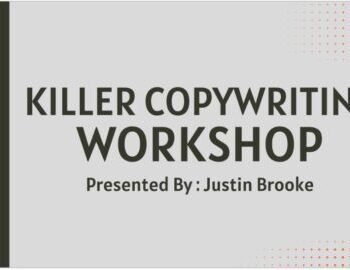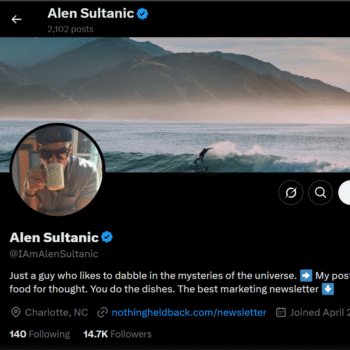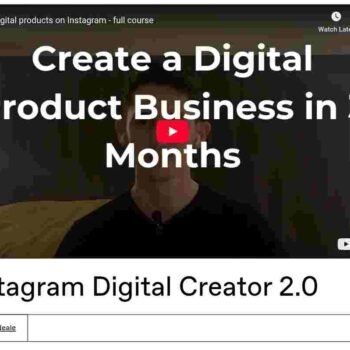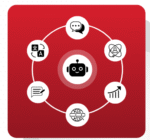Beyond Copy by Daniel Neefe and Antonio Jimenez FF students
$597.00 Original price was: $597.00.$25.00Current price is: $25.00.
Introduction
In the world of persuasive writing and conversion-driven messaging, many aspiring students and professionals stumble over how to craft copy that truly convinces. For FF students seeking an edge, there is one resource that stands out: Beyond Copy by Daniel Neefe and Antonio Jimenez. In this guide, we explore the principles, tactics, and mindset shifts that separate mediocre scripts from high-impact messaging.
What Is Beyond Copy and Why It Matters
Originally developed by Daniel Neefe and co-crafted with Antonio Jimenez, Beyond Copy is more than a writing manual — it’s a strategic framework. While many copywriting courses teach structure or formulas, this program emphasizes the internal mechanics of persuasion: psychology, narrative flow, voice calibration, and influence triggers. For those in the FF student cohort (those who are actively learning, applying, and iterating with feedback), this approach becomes especially useful.
Its claim is bold: once you internalize the methodology, you can produce high-conversion copy even under tight constraints. Many competitors teach passages or templates; Beyond Copy teaches the thinking behind the templates.
Key Pillars Behind the Framework
Here are the foundational building blocks that Beyond Copy teaches (and which separate student-level output from pro-level execution):
1. Mindset of the Persuader
Before writing a single word, you adopt the persuader’s mindset. You think in terms of resistance, objections, emotional tension, and trajectory. You anticipate where the reader might balk, then proactively disarm that resistance. This mental rehearsal allows your writing to feel inevitable rather than forced.
2. The Narrative Arc of Influence
Rather than jumping straight into benefits or features, the framework maps a story journey: pain → catalyst → transformation → evidence → stakes → call to action. This arc ensures the copy carries momentum and legitimacy.
3. Voice & Calibration
Not every persuasive voice works for every brand or market. A key element is learning how to adjust tone, vocabulary, pacing, and rhetorical devices to fit the audience. The training helps avoid common traps like sounding overzealous or inauthentic.
4. Micro-Triggers & Subtle Shifts
These are small shifts in framing, syntax, word choice, and cue words that slide persuasion past the conscious mind. It might be a subtle embedded command, a strategic question, or a structured pause. Students learn how to layer these without overdoing it.
5. Iterative Testing and Feedback Loops
Even the best scripts need calibration. The course encourages breaking copy into testable modules, measuring responses, and refining performance. For an FF learner, this keeps you grounded and ensures real-world results.
How Students (FF Aspirants) Can Use This Framework
If you’re part of the learning cohort trying to elevate your copy, here’s a step-by-step roadmap using principles from that signature program:
Study Models, Don’t Memorize Templates
Rather than copying structure, dissect why each sentence was placed. See the tension, the transition, the lead-ins.Draft with Resistance in Mind
Before you begin writing, list objections, hesitations, and doubts your reader may hold. Then interweave those into early passages.Build the Skeleton: Story Arc First
Sketch the narrative trajectory: hook, struggle, breakthrough, evidence, stakes, and CTA (call to action). Fill in later.Voice Testing
Write multiple versions (mild, moderate, aggressive) and see which resonates. Use micro-focus on phrasing, cadence, and pacing.Embed Micro-Persuasion
Use questions, pauses, parentheses, rhetorical echoes, and analogies as subtle cues.Split-Test & Optimize
Even small changes (headline, first sentence, CTA phrasing) get tested. Always track metrics like clickthrough, open rate, conversion.Review & Reverse Engineer
After your campaigns run, reverse engineer your own winners. Crisp, high-performing pieces become your internal reference library.
Comparing with Conventional Copy Resources
Many copy programs focus heavily on “formulas” (AIDA, PAS, Problem-Solution). While those are helpful, they tend to generate flat, predictable output. The Beyond Copy perspective is deeper:
It emphasizes why those formulas work in psychological terms, not just how to plug and play.
It gives attention to mid-section transitions—those often ignored parts where interest dies.
It teaches writing for resistance zones—the moments where the reader almost zaps out.
It is especially useful for students (FF learners) because the curriculum is structured around failure, iteration, and leveling up.
Others may give you “swipe files” or fill-in formulas; this method gives you the mental architecture so you can eventually create without reliance.
Case Study: From Weak Draft to High-Impact Copy
Here’s a simplified illustration of how an FF student might apply the method:
Original Weak Hook
“Are you a small business owner struggling to get more clients? Try our new service.”
Transformed via the Framework
Anticipate resistance: “You’ve heard the promises before—growth programs, overnight fixes. Yet you’re still stuck. Let me show you the missing piece.”
Introduce narrative cue: “It wasn’t until I nearly folded my own business that I uncovered the single shift that tripled my revenue in 90 days.”
Layer evidence: “I didn’t believe it either—until my client’s ad campaign returned 5× in under 7 days. Then the second campaign returned 9×.”
Raise stakes: “If you wait another month, your competition will get leaner, more aggressive, and eat your margins.”
Call to action: “Click below to access the exact system I used—no fluff, no guesswork.”
Notice how that transformed version anticipates objections (“you’ve heard the promises before”), tells a mini story, adds evidence, and heightens urgency. That is the ethos the training instills.
Common Mistakes Students Make & How to Avoid Them
Here are pitfalls that new learners often fall into, along with recommended corrections:
| Mistake | Why It Happens | Fix |
|---|---|---|
| Overusing hype words | Thinking more superlatives equals more persuasion | Prioritize specificity, relevance, and emotional clarity |
| Ignoring transition zones | Jumping too fast from point A to point B | Insert micro bridges, rhetorical cues, and framing phrases |
| Neglecting negative cues | Avoiding mention of risks or objections | Address risks head-on but reframe them as opportunities |
| No feedback incorporation | Publishing without review or split-testing | Always test variants and learn from real audience response |
| Sticking too rigidly to formulas | Forcing your message to fit generic molds | Use templates only as scaffolding—let the idea and tension drive structure |
Why This Approach Works Better for Aspiring Copywriters
Scalable Thinking: You don’t just create one piece—you build a persuasion mindset applicable to any niche or medium (sales pages, email, video scripts).
Defense Against Copy Fatigue: Because you’re not relying on rote formulas, your ideas remain fresher and tailored.
Adaptive Across Channels: The same mental architecture works in short-form ads, long articles, webinars, and more.
Ownership of Voice: You can adapt voice to your brand, your personality, or a client—without sounding like you’re “plugging and playing.”
Applying It in Practice: Project Roadmap for an FF Student
Pick a project: a landing page, email sequence, ad script, or sales letter.
Brainstorm resistance points your target avatar likely holds.
Outline the narrative skeleton using the arc described earlier.
Write a first full draft without self-censoring.
Annotate with micro-triggers —where can you insert a rhetorical question, parenthetical, or subtle shift?
Build two variants of the same piece with changes in hook, CTA, or voice tone.
Run small tests (e.g. email send to small segment, pay for a few ad impressions).
Collect data, analyze drop-off points, refine.
Reverse-engineer successes into your future projects.
Within three to six iterations, most learners produce something far beyond their earlier “best” work.
Beyond Just Copy: Thinking Like a Marketer
While writing is central, the richer method teaches that copy is only one element in a persuasion ecosystem. A student should also:
Understand traffic sources and funnels
Learn offer creation (what you sell, bundling, guarantees)
Study market language (how your audience actually speaks)
Practice “stacking proof” (testimonials, stats, case studies)
Cultivate relationship-building through follow-up sequences
This holistic perspective ensures that your copy doesn’t just read well in isolation—it performs in the real world.
How to Continue Leveling Up
Reverse-engineer top-performing sales pages in your niche to see how they structure tension and transitions.
Swap drafts with peers or mentors and ask, “Where would you get stuck reading this?”
Maintain a swipe file of clever transitions, micro-phrases, and opening hooks—annotated with why they work.
Revisit your older work after several months and rewrite using the new lens.
Invest in feedback communities or critique groups so you don’t plateau alone.
Conclusion
For ambitious learners in the FF (feedback-focused) space, the teachings in Beyond Copy by Daniel Neefe and Antonio Jimenez represent more than a course—they represent a shift in how you see persuasion, messaging, and the copy you produce. By internalizing the structure of emotional tension, micro-triggers, voice calibration, and iteration, you’ll move from writing safe, formulaic drafts to composing scripts that command attention and deliver results









